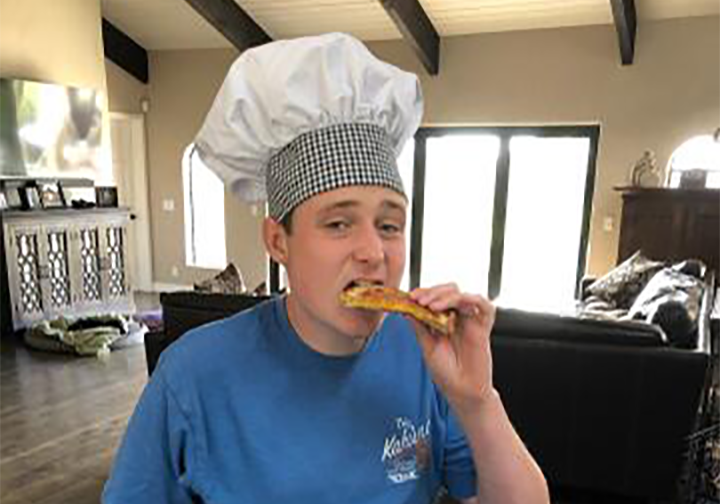Every other week, Community-Based Instruction (CBI) teacher Courtney Crase-Delp opens up her laptop in her kitchen to log onto Zoom and greets her students in the health and cooking class. In the 75-minute period, she demonstrates how to make dishes such as macaroni and cheese, vegetable soup, grilled cheese sandwiches, cupcakes and more, with her students following along in their own kitchens.
The third-period class, with 13 students in all four grade levels, aims to help this group of special education students practice healthy lifestyles, kitchen safety and easy-to-follow recipes. For Phase 3B of the district’s opening plan, students will be cooking in both a remote and in-person setting, bringing about new challenges and benefits.
A week prior to cooking, the class reviews the recipe. In the remote model, students gather their own ingredients and work on grocery shopping skills. However, Crase-Delp has been providing ingredients for in-person students. When it is time to cook, Crase-Delp demonstrates what she is doing on camera as her students follow along.
In the fall, they kicked off class with microwave mug cooking and have progressed into cooking with an oven and stove. The entire process typically takes an hour for both prepping and cooking.
In terms of class assignments, students work on reflections and reading recipes in preparation for future dishes, and Crase-Delp observes and supports them as necessary.
In remote learning, Crase-Delp said the model has meant overcoming many challenges; among them are that she cannot provide hands-on support for students and is unable to have the class work as a group.
Additionally, virtual classes have made learning more difficult for some students. Although sophomore James Cuthbertson is remaining remote for the rest of the school year, he said that he prefers in-person learning.
“It is hard to focus when everyone is talking at once over the computer,” he said.
Perhaps surprisingly, the model has presented benefits as well. In a traditional school setting, cooking was a group activity for Crase-Delp and her students. Now, with remote learning, Crase-Delp said that the class has become more of a “family cooking class,” as parents pitch in and provide hands-on help when needed.
While some students receive help from parents, depending on their individual needs, many have become more independent through remote learning, something that may not have happened under normal circumstances.
“I love seeing our students in their own kitchens using their appliances,” Crase-Delp said.
More recently, Crase-Delp has seen the challenges and benefits of having her students return to school. While the in-person setting allows Crase-Delp to help students cook, students need individual cooking stations to maintain social distancing, and cannot share kitchen tools or ingredients; this prevents them from measuring ingredients, which is an important skill for them to learn.
Senior Will Craig said he enjoys the class as it teaches students essential life skills, like preparing food and being safe. He enjoys cooking at home because his kitchen is larger than the classroom kitchen; however, he prefers being in-person for the social interaction.
“I want to see my friends face-to-face,” Craig said. “Online is still fun, but I think it's too much screen time.”
While the hybrid model has been a challenging experience, Crase-Delp said the core of the class has remained the same: lessons that teach independence and kitchen skills.
“Cooking virtually has been an interesting experience, but I have enjoyed every minute. It's like we are all cooking in each other's homes,” Crase-Delp said. “We’re having too much fun.”


























